|
|
Review GSM phone Pantech PG-6100
Package:
- Handset
- Manual
- Battery
- Charger
The company of Pantech has been paying more and more attention to the Russian market, and as a result many new models are first launched in our country and then in others. That is even more interesting when speaking about the leader of the line equipped with a 2MP camera, integrated radio, memory card expansion slot, and mp3 player. And now we'll try to evaluate how complete the model is as compared with the first company experience for the GSM market.
The body design gives away a phone in no degree, the front panel resembles a small digital camera, a small LCD
screen and control buttons are on the back. At first sight you will surely think about a digital camera, guessing a phone is almost
impossible, only a rotational fold of the body tells about it, and it also isn't striking. Now the majority of the
companies try to make double interface for their phones, so that in one mode that is a phone and in another we see a
photo camera. Sony
Ericsson K750 or the S700 may be considered the best combination of both functionalities. These are the first models with double interface and also ones of the first with high matrix resolutions (only Sharp products before). But still there were no models to disguise as a camera so much till today. A good example is Samsung SCH-S3200. It was produced for the Korean market and was even more a photo camera with an integrated CDMA-module than a fully-functional phone. Another example is Samsung SCH-V7700 the first 7-MP camera device. The integrated optics really amazes in this phone, however, it more resembles a camera of average size and not a phone.



Then Pantech PG6100 is the first device to use the idea of the device convergence. The developers managed to create a device resembling a digital camera at most. That gives extra points to the PG6100 as a fashion device, since not everyone will guess that this camera can call.
The phone size is typical for its class (80x47.5x24.9 mm), it lies well in a hand, but still rectangular body edgings are uncustomary. The weight is 115 grams which is rather heavy. Opening the device is possible with a hand. The opening angle is 45 degrees, the bottom part is much heavier and this disproportion makes your hand tired at durable conversation. A strap hole is on the top right edge, though carrying a phone on the neck is not very comfortable due to its weight.

Trying to make an image resembling a digital camera the developers placed the external display to the back panel from the front one. That is rather unusual, at an incoming call you have to look at this screen and then after rotating the device open the clamshell. That is a dubious comfort not compensated with a capability to shoot in a customary way. However, a calling mode but not photo camera one is the priority. The last function is secondary as a rule.
A camera objective is placed on the front panel, a flash is above, and it is light diode but not impact. To the left - a light indicator with several lighting colours. An interface connector closed with a plastic shutter is on the bottom, it is the same as in the previous models. A headset connector is placed to the left and shut with a cover also (it is a thin miniJack that allows using non-original earphones), and an IrDA gap is below. A camera button, a coupled volume button are on the right, an RS-MMC connector is a bit lower.



A 96x96 pixels (20x20 mm) screen is on the back, it is 262K (really the colour rendering exceeding 4K is hardly believable). The screen behaved badly in the sun, its size prevents from using it fully. The characteristics are middling, however big font-size and full screen picture at incoming call make it bearable enough. Also it is not ideal as a viewfinder. Keys near the display serve for changing the shooting modes, no other applications in the standby mode.
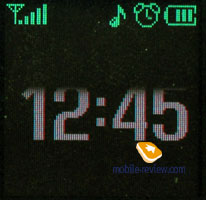
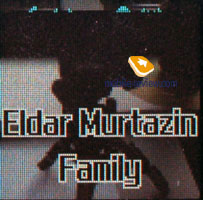
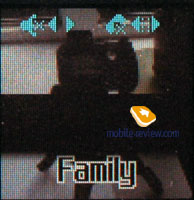
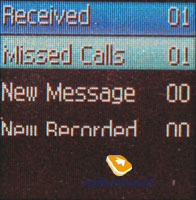


Opening the phone you see an internal 262K screen of 176x220 pixels (TFT, 31x38 mm). Up to 6 text lines and 3 service lines are placed on the screen. The quality of the picture is one of the best in this kind. It screen fades in the sun, however the picture remains readable.

The keypad is plastic with large well-distanced buttons. Working with it makes no troubles, despite its design remained at the level of 5 year-old ones. It gets out of the whole model style adding some cheap tint. The keypad is blue and well seen in various conditions.


The assembly quality is average, the parts have no backlash, but some scratches are heard at opening. They might be unheard on a new device, but will surely appear with time, and an applied plastic confirms.
A battery and a SIM-card compartment are unordinary. To access it you need to pull a catch and fold back the cover. Inside you'll see the very compartment closed with a metallic cover. A double catch is used to achieve the maximum reliable battery fixing and no backlash. The battery is 830-mAh Li-Ion. It can serve for 200 hours in the standby mode and up to 3 hours in the talk mode. The manufacturer claims this. Having about 30 minutes of talks, 2 hours of radio and 20 minutes of other functions gives approximately the same working time. The top level is 2 days of battery life at the minimum of using the device.


A SIM-card slot is under the battery, no peculiarities, changing the card is possible only with the device off.

Menu
You enter the main menu by pressing the left soft-key. The main menu is a 3x3 matrix with well drawn animated icons. The menu is colour and well accepted. Submenus are vertical lists, and moving between the separate lists of the main items is possible by horizontal deviations of the navi pad. That is sometimes comfortable. Number navigation with number series is supported. Moving the navi pad to the left you call an own menu "Favorites", where you can add several most frequently used functions. Other directions are assigned preset items. To the right calls "Messages", up - and you can select a profile, down - look through a phone book.

Phonebook. Up to 800 numbers (yes, really, numbers not names) can be saved in the phone book. Nevertheless such information as Name (up to 30 characters), mobile phone, home, office numbers and fax may be saved for a name. Separately, you set a user group, select an image or video (may be done at once), call melody, e-mail address and a short text note. The number of characters possible to enter more is not shown at the text entrance.

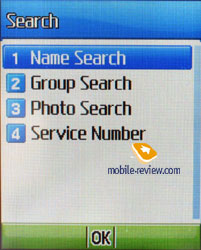
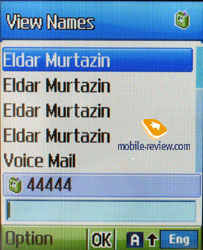
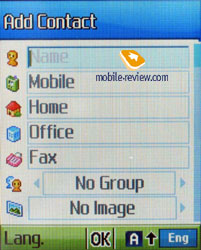
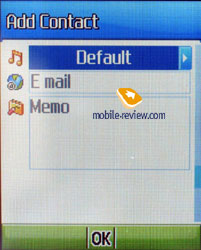
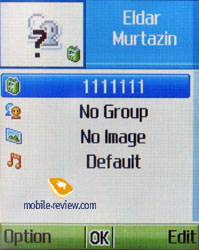
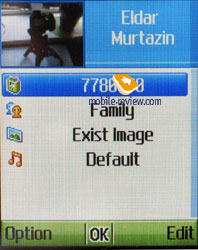
The general list shows both numbers from the phone memory and the SIM-card. A real improvement as compared with the previous models is a number shown in the bottom of the screen for a selected name; you can flick through all the numbers by horizontal deviations. If a selected name and surname do not fit the screen they are automatically scrolled. A capability to choose the search language is a real advantage (by default it is a current menu language). For instance, using Russian menu you can search for a note in English and vice versa.
There are 5 preset groups including "Others". You can create your own group. Own call melody may be chosen for a group (only from 15 preset, not personal), but not a picture.
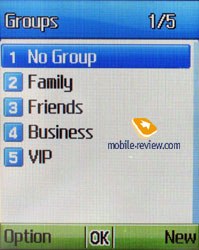
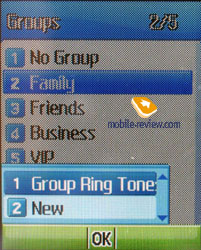
Besides a standard search by name, you can search in groups; look through the photos associated with the names. The last case shows a matrix with miniatures.
An unpleasant moment is changing a SIM-card destroys all the data structure in the phone memory. Thus, all the numbers assigned for a name get separated (for instance, having assigned four numbers to Smith, you get four Smiths with different numbers). The images associated with names disappear like all the other phone book settings. The disadvantage is generally insignificant in case a user won't change his SIM-card and will do it only when changing the phone. But considering real use of the phones the situation seems dubious.
Messages. The device not only supports SMS and MMS, but can work with e-mail. Preset pictures, melodies and text templates can be added to usual messages. You can easily change the input language, T9 is supported. Up to 100 SMS and 30 MMS can be saved in the phone. The last ones have a usual interface while entering, a disadvantage is you can't attach a more than VGA photo to a message, that is a strict software constraint. You can't attach video like while saving a number. So, the MMS realization looks rather weak, now the company is not good at it.
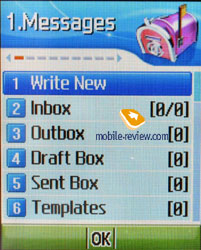
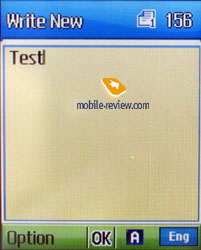
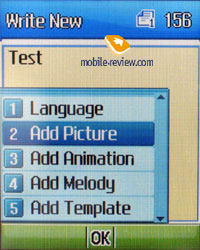
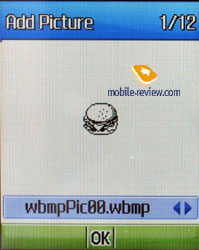

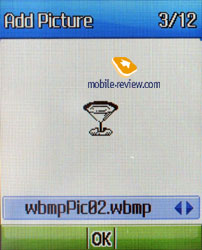
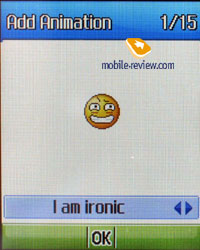
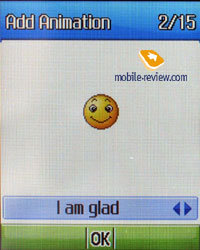

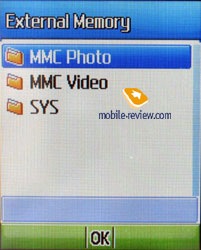
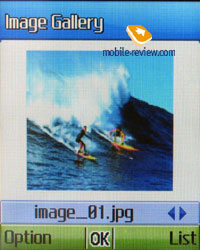
An integrated POP3/IMAP/SMTP mail client supports several accounts and has an attachment constraint of 300 KB. At that any file can act as an attachment, even the one from the MMC-card memory. Reading Russian codings may be hard, since the device understands only Unicode.
Call lists. Up to 20 entries in each list, everything is rather customary. There is a combines list of 30 numbers. Equal numbers are not summed up, but are shown one after another. If you keep a corresponding image for a caller, then an icon is shown in the list. You can see information about a call duration, call counters and GPRS-traffic.

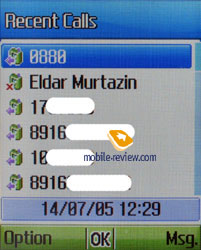

Media gallery. The device provides 8.4 MB of internal memory, which is not enough, even at the support for MMC-cards today. From here you can view the phone and the card contents. The division is according to the folders and n the memory card all the folders are displayed. The media gallery acts as a plain file manager; from here you can send files to other devices via IrDA or Bluetooth.

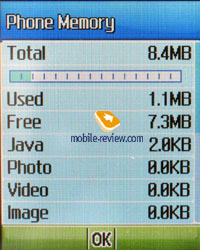

Multimedia. The most interesting applications are gathered here, it includes a camera (read about it below), an mp3 player, radio and games.

MP3 player allows playing files with various bit rates, but they are to be placed in certain folders both on the card and in the internal memory. Search in all the folders is not provided, and you should remember it while copying data. Playlists allow grouping files as you wish. There are preinstalled equalizers for various styles of music and a set of skins for the very player. The player quality is medium, no speed rewind, only jumping to the next composition.
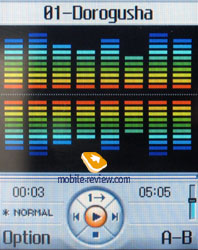
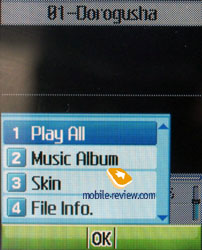
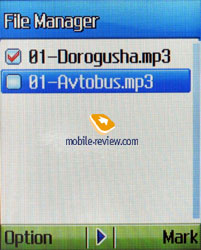

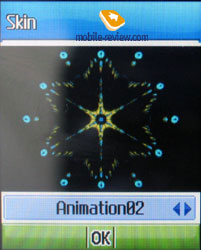
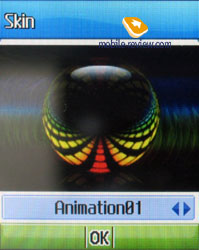
Radio. An integrated FM-radio works only with a headset attached. You can keep up to 20 stations with names for them. The quality is lower than average, while the radio is on, the device starts slowing down. That is especially seen at the first frequency change. The radio can't be minimized and work in the background, like the mp3 player. When closing the clamshell you don't close these applications. However the absence of the background mode is a serious constraint on the device: you can't use its functionality fully, for instance, write an SMS, look up a name in the phone book. You'll have to close the current application.
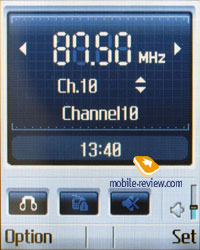
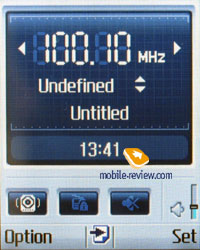
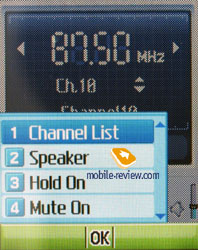
There only one game called "Run" in the "Games" sector. That is a plain but well-drawn arcade. The second game is hidden in the "Java" sector, and it is called "AquaPangPang". Here you have to control a submarine, collect objects and avoid obstacles. Both games are mainly for young people.
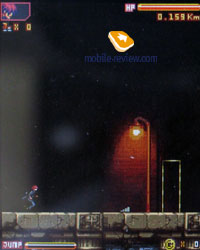
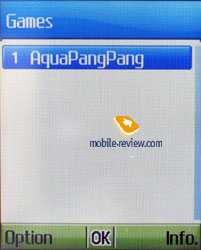
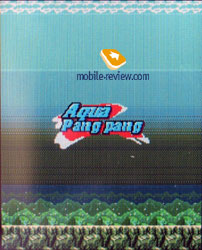

Organizer. Alarm clock may be set for once, everyday and every (Monday-Friday, Monday-Saturday).


The calendar shows the whole month, up to 50 events may be saved and a reminder may be set for each.
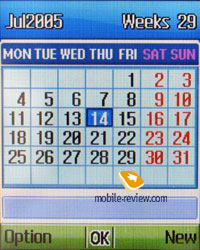
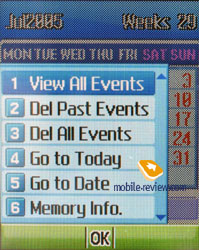
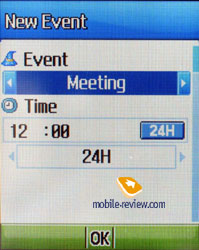
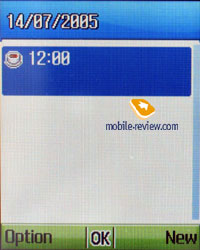
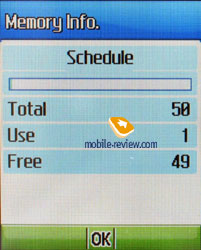
Notes are either text (up to 255 characters) or voice (up to 3 minutes).
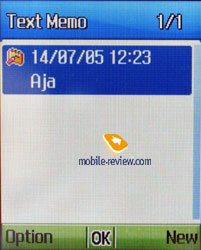
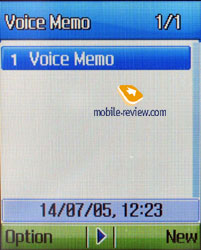
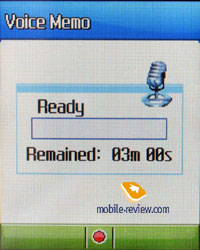
World time, calculator, unit converter, stopwatch with 4 intermediate values, countdown timer are also gathered here.
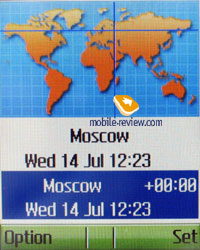
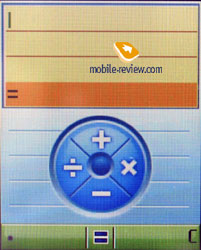
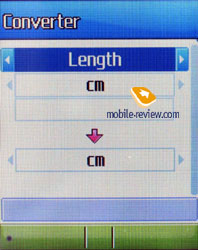
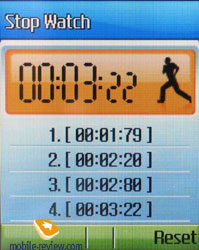
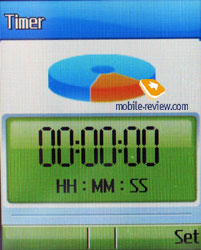
Connectivity. Wap-browser version 2.0 is here. Nothing special may be said about it.

The IrDA is fully functional; its work type is set manually from the menu (data exchange, synchronization with PC, connecting to a network with a PC).
Bluetooth version 1.2 is integrated, the following profiles are supported GAP, SDAP, Serial-Device A, Serial-Device B, OBEX, Headset-AG, Dun-GW, OPP-Client, OPP-Server, FT-Server, FT-Client, Handsfree-AG, BIP-Image Push. It rouses no cavils, everything is quite plain. A pleasant thing is you can set the type of memory where to store the files received via Bluetooth and IrDA by default.

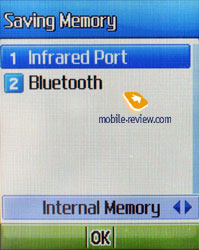
On activating a corresponding menu item and connecting to a PC with an included into the kit cable, the phone will be seen as USB Mass Storage.
Settings. From this variety of settings we should stress a possibility to choose a version of a sound equalizer, and despite the previous models, not a picture on the screen will be changed but a light indicator near the flash. Various wall-papers may be set for the display, they include digital or analog clock, a calendar or a greeting.
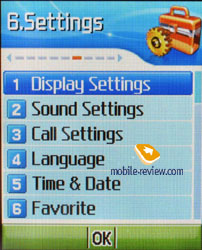
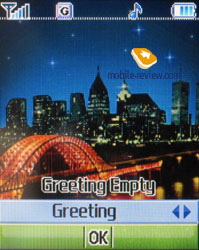
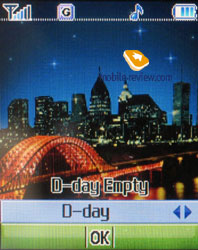
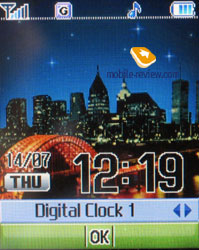
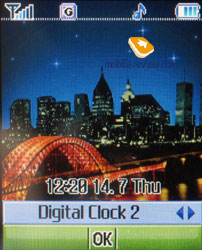



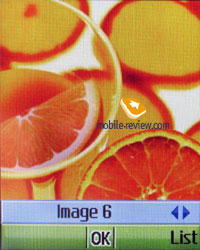
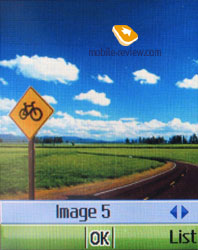
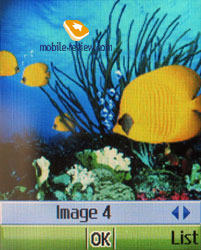
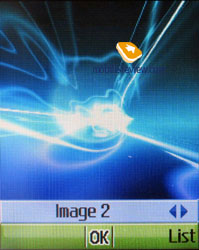
Profile settings are customary, a vibra and a call melody can act together.
Camera. The model is the first 2MP cameraphone by the company, but that doesn't mean the module is realized correctly in the device. For instance, only MJPEG video can be recorded, that means very few frames per a second and the fact menu multimedia players won't understand the clips (however the program in the kit plays these clips). Such clips were popular in the first products supporting video recording, and they belong to the first generation of cameraphones. Now they are hard to find, and the entire first five manufacturers refused such phones.
Sound is not recorded with video; the image on the screen is twitched and stands no criticism. Brightness and zoom are available from extra settings. Up to 8 various effects may be applied to the picture. The flash (precisely a light diode) is activated from the menu, and not automatically.
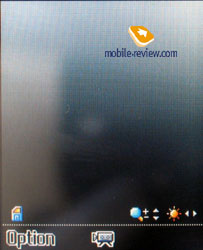

Video
sample 1
Video
sample 2
So, while taking photos the process is not so bad, but still shortcomings are to the fore. First, the device can't remember the last settings, and you'll have to set them all every time. That really upsets, since the resolution is VGA by default. Second, when in the camera mode (the phone is closed) the resolution is restricted with 1.3 MP, and the maximum resolution of 1600x1200 pixels is impossible to achieve. And here is where all the charm of the similarity with the camera is lost. And it's reasonable to ask why to make a fuss if the maximum characteristics are impossible in the closed mode. On the other hand, it's clear the picture quality is much better on the internal screen and it gives the best impression of a shot object.

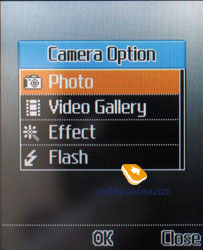
The photos look well on the screen and quite acceptable on a computer. The following picture resolutions are supported - 2 Mega, 1.3 Mega, 1 Mega, SVGA, VGA, QVGA, LCD. There are 8 effects, white balance is set, you can turn the flash on (and an automatic flash mode is not foreseen at all). Extra capabilities include multishooting and a mosaic photo that consists of separate photos.
We used Sony Ericsson K750i to compare the picture quality, I think, you can make up your mind looking at them.
PG-6100 |
SE K750 |
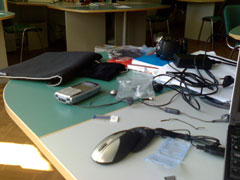 |
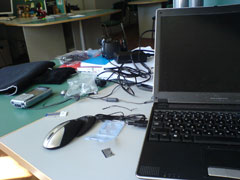 |
(+)
increase, 1600x1200, JPEG |
(+)
increase, 1600x1200, JPEG |
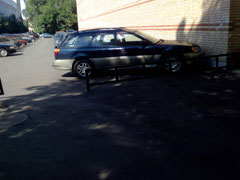 |
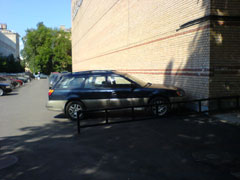 |
(+)
increase, 1600x1200, JPEG |
(+)
increase, 1600x1200, JPEG |
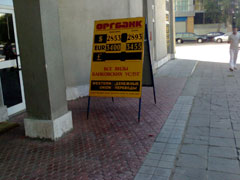 |
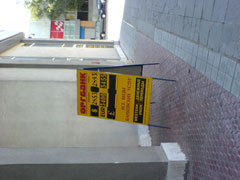 |
(+)
increase, 1600x1200, JPEG |
(+)
increase, 1600x1200, JPEG |
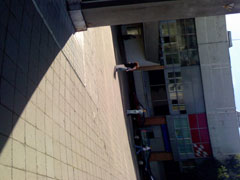 |
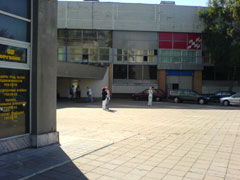 |
(+)
increase, 1600x1200, JPEG |
(+)
increase, 1600x1200, JPEG |
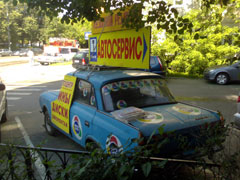 |
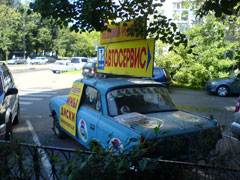 |
(+)
increase, 1600x1200, JPEG |
(+)
increase, 1600x1200, JPEG |
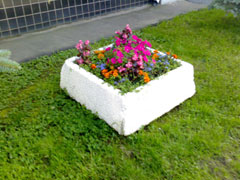 |
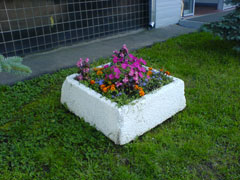 |
(+)
increase, 1600x1200, JPEG |
(+)
increase, 1600x1200, JPEG |
 |
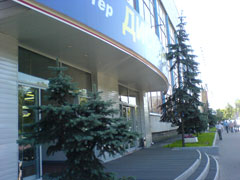 |
(+)
increase, 1600x1200, JPEG |
(+)
increase, 1600x1200, JPEG |
 |
 |
(+)
increase, 1600x1200, JPEG |
(+)
increase, 1600x1200, JPEG |
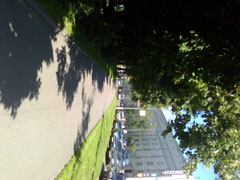 |
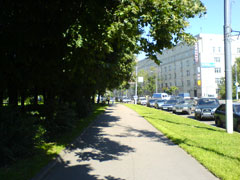 |
(+)
increase, 1600x1200, JPEG |
(+)
increase, 1600x1200, JPEG |
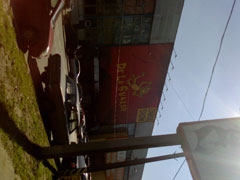 |
 |
(+)
increase, 1600x1200, JPEG |
(+)
increase, 1600x1200, JPEG |
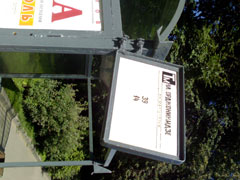 |
 |
(+)
increase, 1600x1200, JPEG |
(+)
increase, 1600x1200, JPEG |
PG-6100
|
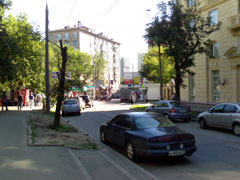 |
 |
(+)
increase, 1600x1200, JPEG |
(+)
increase, 1600x1200, JPEG |
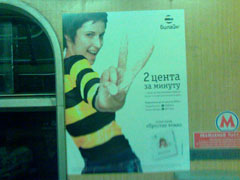 |
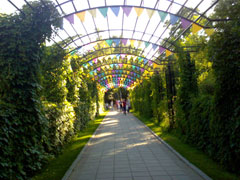 |
(+)
increase, 1600x1200, JPEG |
(+)
increase, 1600x1200, JPEG |
 |
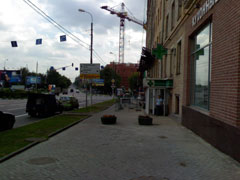 |
(+)
increase, 1600x1200, JPEG |
(+)
increase, 1600x1200, JPEG |
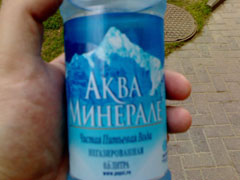 |
 |
(+)
increase, 1600x1200, JPEG |
(+)
increase, 1600x1200, JPEG |
In general the camera quality resembles middle class products, the device really looses to the devices cloistered for these capabilities, for instance, Sony Ericsson K750, Nokia N90. Time for saving photos also disappoints, that is about 3-5 seconds when using a memory card.
Impressions
The volume of the 64-tones polyphony is high, the phone is heard well. Though, to tell the truth, loudspeaker distortions are heard at the max volume. During a conversation metallic sounds are heard in the loudspeaker. I think they are caused by its quality. And despite its volume is past dispute, the melody is not high. The power of the vibra is average. The disadvantages of the phone include incorrect work - thus it can loose connection during a conversation, the perception is worsening. Though, that is standard for Pantech phones, no special differences.
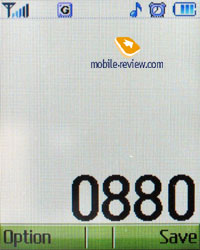
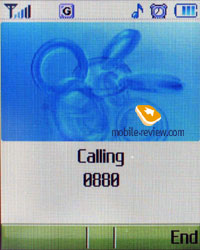
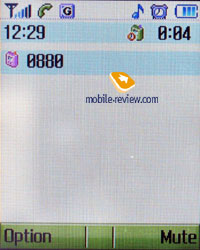
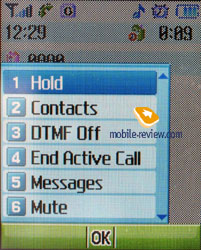
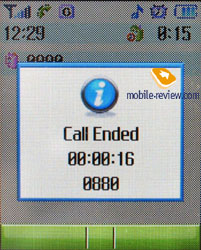
Unfortunately, work with RS-MMC is partial, since there is no full file manager, files should be saved to a special folder for mp3 player. The realization of the player and radio are also partial, since the absence of a background mode is a disadvantage. So, we can list the disadvantages above for long. Then I'd like to mention a sensitive issue of Pantech that is localization. Here is the same old problem - the language is known too poorly.
Mainly the model is just illogical; we mean the nulling of the phone book at the card change, or impossibility to
take pictures in the max resolution, without opening the phone. The design really attracts but that is all for advantages.
We think Pantech PG-6100 will cost at the least 360-380 USD at the sales start in August. At the same time Sony
Ericsson K750i will cost about 360-410 USD (wholesale price is now 280 Euros). The devices may be compared only theoretically, since the K750 wins in everything, even the price is not much higher. Pantech PG-6100 is nominally interesting, but the realization of all the functions rouses too many questions. And the main is the device remains on the level of the previous generations in the comfort of use, no advance: the interface and ergonomics are really poor. The awkwardness of the solution and the absence of a fashion component allow supposing the sales of the PG-6100 will be very moderate. In fact, there are some people who like such devices, but still the device won't become a bestseller, it s a very niche product.
Eldar Murtazin (eldar@mobile-review.com)
Translated by Maria Mitina (maria.mitina@mobile-review.com)
Published — 19 July 2005
Have something to add?! Write us... eldar@mobile-review.com
|
News:
[ 31-07 16:21 ]Sir Jony Ive: Apple Isn't In It For The Money
[ 31-07 13:34 ]Video: Nokia Designer Interviews
[ 31-07 13:10 ]RIM To Layoff 3,000 More Employees
[ 30-07 20:59 ]Video: iPhone 5 Housing Shown Off
[ 30-07 19:12 ]Android Fortunes Decline In U.S.
[ 25-07 16:18 ]Why Apple Is Suing Samsung?
[ 25-07 15:53 ]A Few Choice Quotes About Apple ... By Samsung
[ 23-07 20:25 ]Russian iOS Hacker Calls It A Day
[ 23-07 17:40 ]Video: It's Still Not Out, But Galaxy Note 10.1 Gets An Ad
[ 19-07 19:10 ]Another Loss For Nokia: $1 Billion Down In Q2
[ 19-07 17:22 ]British Judge Orders Apple To Run Ads Saying Samsung Did Not Copy Them
[ 19-07 16:57 ]iPhone 5 To Feature Nano-SIM Cards
[ 18-07 14:20 ]What The iPad Could Have Looked Like ...
[ 18-07 13:25 ]App Store Hack Is Still Going Strong Despite Apple's Best Efforts
[ 13-07 12:34 ]Infographic: The (Hypothetical) Sale Of RIM
[ 13-07 11:10 ]Video: iPhone Hacker Makes In-App Purchases Free
[ 12-07 19:50 ]iPhone 5 Images Leak Again
[ 12-07 17:51 ]Android Takes 50%+ Of U.S. And Europe
[ 11-07 16:02 ]Apple Involved In 60% Of Patent Suits
[ 11-07 13:14 ]Video: Kindle Fire Gets A Jelly Bean
Subscribe
|
































































































































